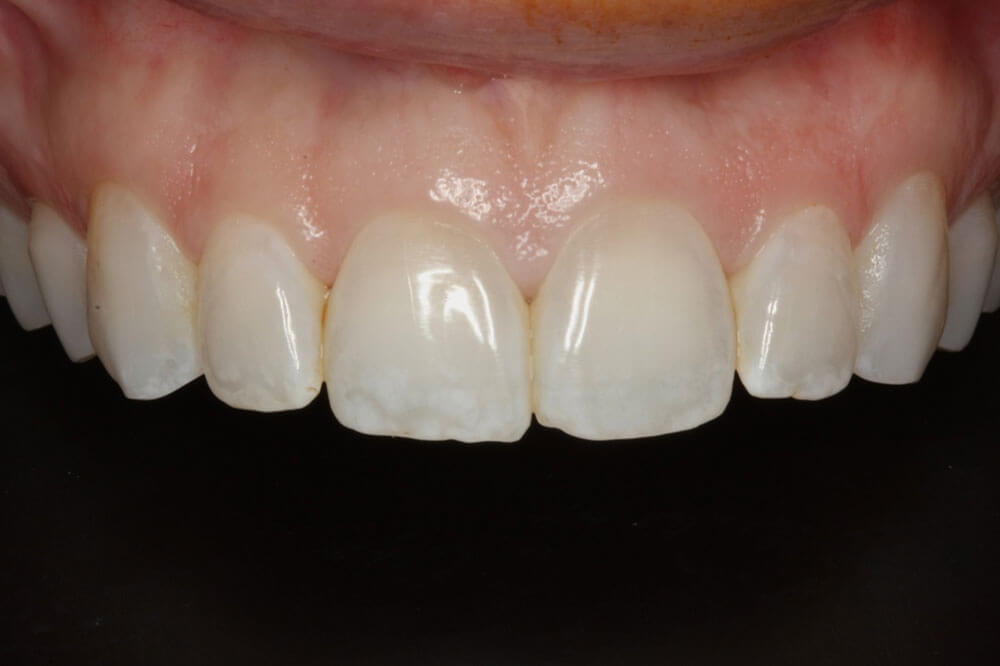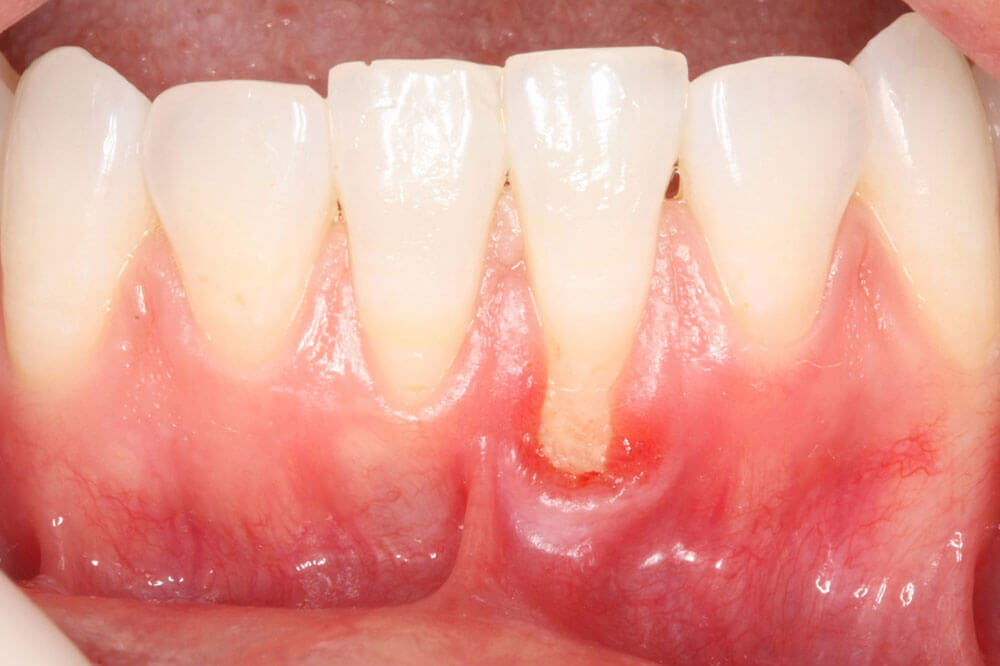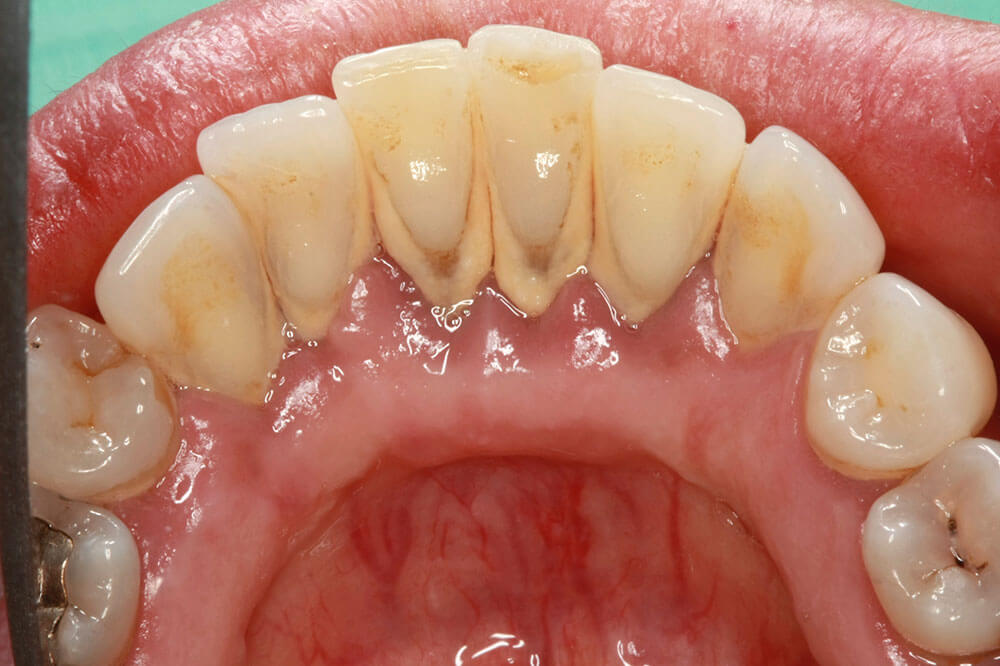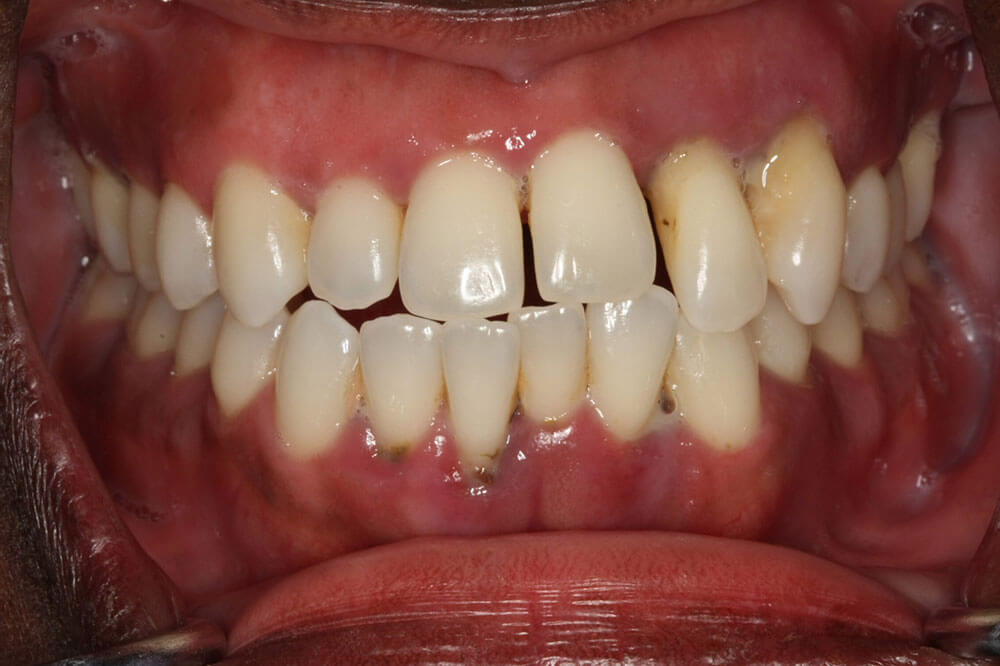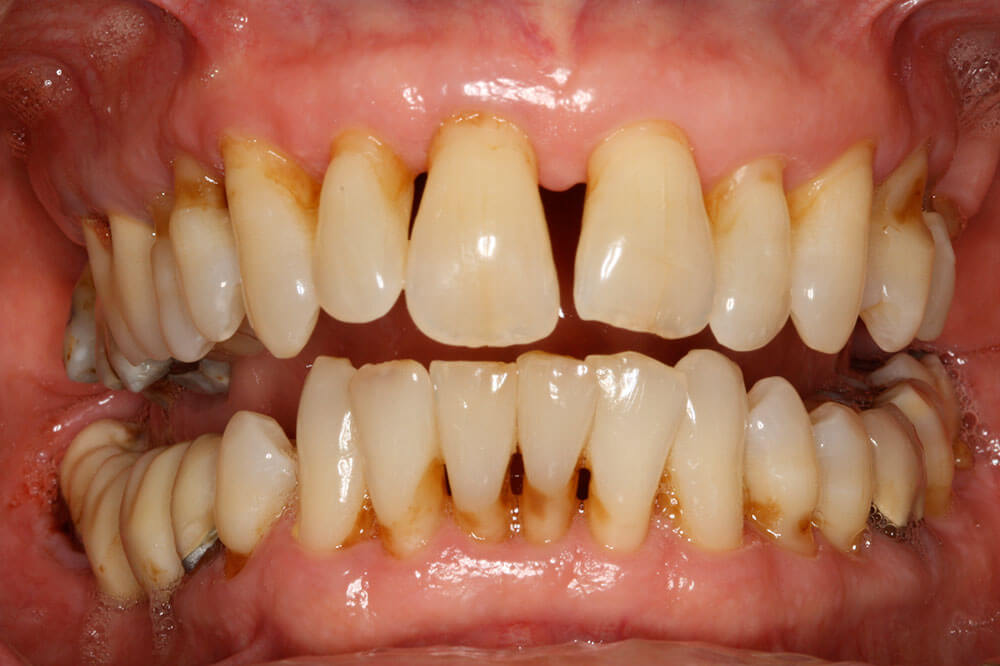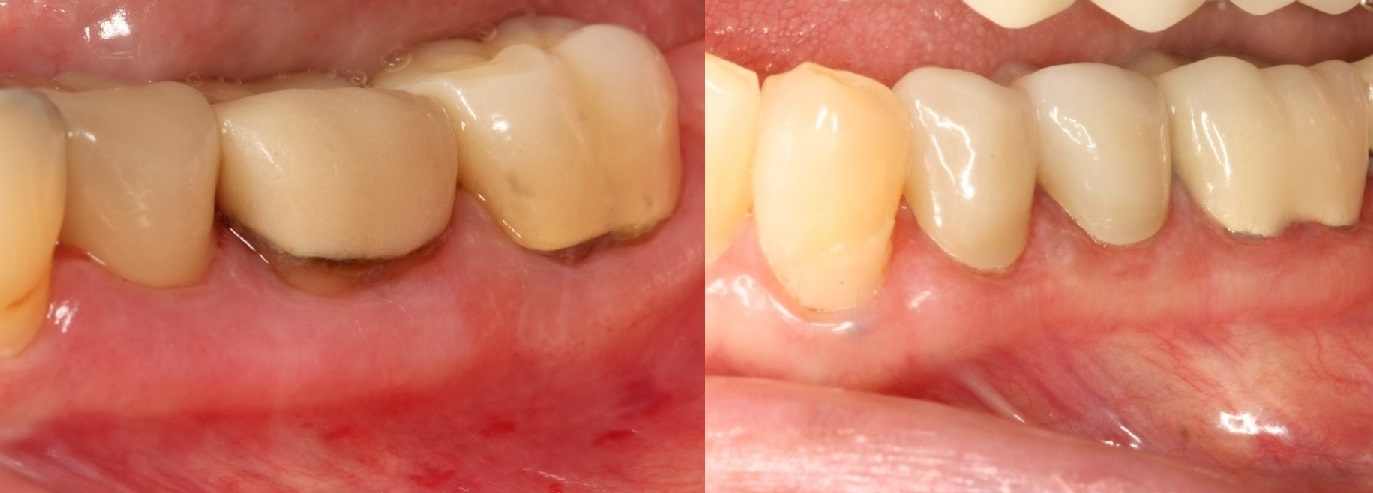In health, gums are pink and firm. The gum tissue covers the bone and fits firmly around the tooth like a collar. There should be no bleeding when you brush or clean between your teeth.
Gingivitis – Gum Inflammation
The human mouth is filled with bacteria. These bacteria, along with mucous and other particles form a sticky film called plaque is constantly forming and which adheres to the teeth. This plaque can be removed by brushing and flossing. When the plaque is allowed to remain on the teeth, the bacteria involved become more harmful, and more difficult to remove, creating an environment that is more toxic to the tissue. The plaque itself can harden creating a cement like substance (calculus) that cannot be removed with brushing and flossing alone.
This leads to inflammation and gum disease.
The first stage of periodontal disease is gingivitis. It is an inflammation of the gingiva or gums and is characterized by red, tender, swollen gums, and halitosis or bad breath. It is a mild form of gum disease that can usually be reversed with daily brushing and flossing, cleaning by a dentist or dental hygienist, healthy nutrition and the cessation of smoking. This form of gum disease does not involve any loss of bone and tissue that hold the teeth in place. Untreated gingivitis can lead to periodontitis.
Periodontitis
The next stage of periodontal disease is periodontitis. It causes irreversible damage to the bone and connective tissue that support the teeth in the mouth. As it progresses the pockets deepen and the body’s immune system initiates an inflammatory response in which the body in essence turns on itself and the bone and connective tissue that hold the teeth in place are broken down and destroyed. If not treated the teeth may eventually become loose and need to be removed. While the initial cause of gum disease is bacterial plaque, there are other risk factors making one susceptible to periodontal disease:
Risk Factors
Smoking
Smoking is one of the most significant risk factors associated with the development of gum disease, and can lower the chances for successful treatment.
Hormonal changes
Hormonal changes in girls and women can make the tissue more sensitive and make it easier for gingivitis to develop. This includes puberty, menopause, and pregnancy.
Diabetes
Diabetes lowers the body’s immune system, making it easier for people to develop infections including gum disease.
Medications
Medications can affect the flow of the saliva which makes the oral tissues vulnerable to infections. Some medications can cause abnormal overgrowth of the gum tissue which makes it difficult to keep the teeth and gum tissue clean.
A genetic susceptibility can be present that make some more prone to gum disease than another. Other factors include aging, stress, inadequate nutrition, and substance abuse.
Soft Tissue Conditions
A periodontist is mainly concerned with diagnosing and treating soft tissue problems. Some soft tissue conditions include Lichen Planus, Benign Mucous Membrane Pemphigoid, Geographic Tongue, Burning Mouth Syndrome, Aphthous Ulcers and Oral Mucositis from Chemotherapy.

